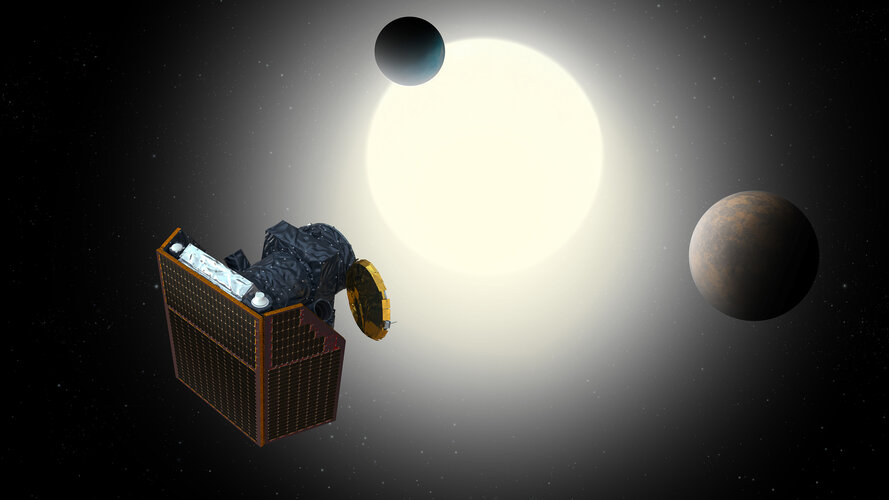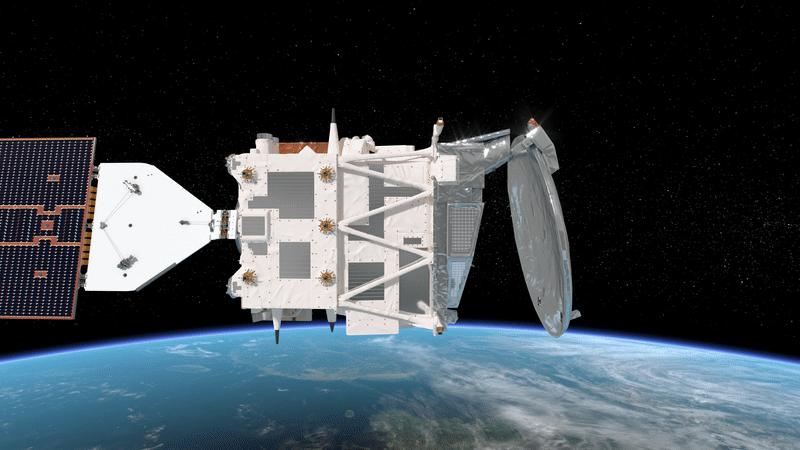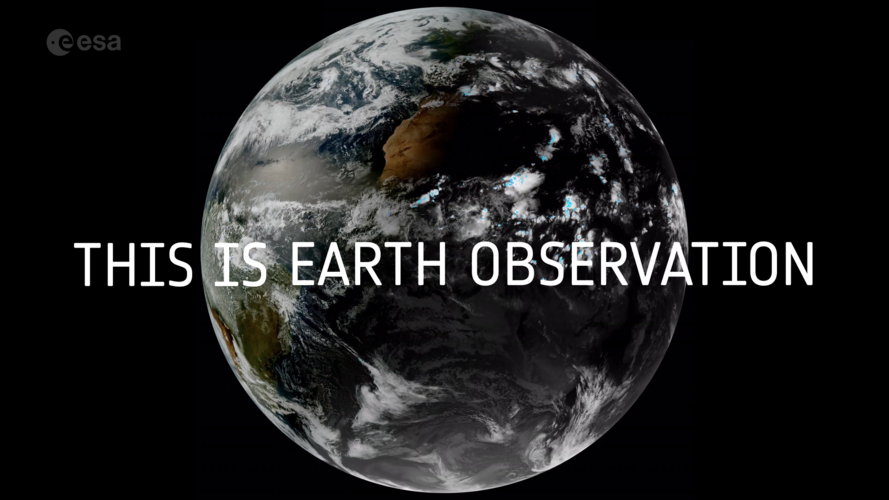
Copernical Team
ESA’s Cheops helps unlock rare six-planet system

Ariane 6 hot-fire timelapse
 Video:
00:02:16
Video:
00:02:16
Scenes from the combined hot-fire test held for Ariane 6 on 23 November 2023. Teams on the ground went through a complete launch countdown followed by a seven-minute full firing of the core stage’s engine, as it would fire on a launch into space.
This video shows the Ariane 6 mobile building opening its doors, the building rolling away to leave the Ariane 6 test model on the launch pad and the seven minutes of firing.
On the launch pad in Kourou, French Guiana, the Ariane 6 test model fired of its Vulcain 2.1 main stage engine for seven
How will EarthCARE shed light on clouds?

In around six months, ESA’s Earth Cloud Aerosol and Radiation Explorer mission will take to the skies to advance our understanding of the interactions between clouds, aerosols and radiation in Earth’s atmosphere. But how will it do that exactly?
The power of Earth observation
 Video:
00:02:07
Video:
00:02:07
We are all intricately interconnected to our Earth – from the trees that provide us with oxygen, to the natural sources that shape our landscape. ESA's Earth observation programme is at the forefront of monitoring our planet's dynamic changes. Using cutting-edge satellite technology, ESA captures invaluable data on Earth's atmosphere, land and oceans. From tracking climate patterns to assessing environmental health, ESA's Earth observation initiatives provide essential insights for scientific research, environmental management and disaster response. By harnessing space technology, ESA contributes significantly to our understanding of Earth – ensuring a sustainable future for generations to come.
Small but mighty companies working on ESA’s planetary defence mission

There are 28 small or medium-sized enterprises (SMEs) working on ESA’s Hera planetary defence mission, which involves about 100 companies in total. These SMEs are building European cutting-edge technologies for the spacecraft, its instruments and two CubeSats.
Biking in space

Andreas Mogensen is taking part in a virtual reality experiment to make exercising on the Space Station bicycle more immersive and exciting.
China Targets Breakthrough in Space Solar Energy Transmission
 In an ambitious move to harness solar energy more efficiently, Chinese scientists and engineers are working on a pioneering project - a space-based solar power facility. This innovative endeavor, led by the China Academy of Space Technology in Beijing, aims to capture the sun's energy in space and wirelessly beam it back to Earth, a feat not possible with terrestrial solar panels.
Senior r
In an ambitious move to harness solar energy more efficiently, Chinese scientists and engineers are working on a pioneering project - a space-based solar power facility. This innovative endeavor, led by the China Academy of Space Technology in Beijing, aims to capture the sun's energy in space and wirelessly beam it back to Earth, a feat not possible with terrestrial solar panels.
Senior r China's Lunar Samples on Display in Macao to Inspire Future Explorers
 Macao has initiated a series of public activities aimed at spreading knowledge about China's space, marine, and polar explorations, reflecting a growing interest in these advanced scientific fields within the region. The Government of the Macao Special Administrative Region, in collaboration with the Liaison Office of the Central People's Government in the Macao SAR and the China National Space
Macao has initiated a series of public activities aimed at spreading knowledge about China's space, marine, and polar explorations, reflecting a growing interest in these advanced scientific fields within the region. The Government of the Macao Special Administrative Region, in collaboration with the Liaison Office of the Central People's Government in the Macao SAR and the China National Space China Manned Space Agency Delegation Highlights SARs' Role in Space Program
 In a significant acknowledgment of regional contributions to national space efforts, a delegation from the China Manned Space Agency (CMSA), led by Deputy Director Lin Xiqiang, praised the involvement of the Hong Kong and Macao special administrative regions (SARs) in China's space programs. The delegation, which included key astronauts from recent Shenzhou missions to the Tiangong space station
In a significant acknowledgment of regional contributions to national space efforts, a delegation from the China Manned Space Agency (CMSA), led by Deputy Director Lin Xiqiang, praised the involvement of the Hong Kong and Macao special administrative regions (SARs) in China's space programs. The delegation, which included key astronauts from recent Shenzhou missions to the Tiangong space station Northrop Grumman completes CDR for SDA's Tranche 1 Tracking Layer
 Northrop Grumman Corporation (NYSE: NOC) recently completed its Critical Design Review (CDR) on a proliferated low-Earth orbit constellation of 16 missile tracking satellites for the Space Development Agency, clearing the way to begin production work on the space vehicles.
The CDR maintained an accelerated pace and was completed within 13 months of the award announcement.
The satelli
Northrop Grumman Corporation (NYSE: NOC) recently completed its Critical Design Review (CDR) on a proliferated low-Earth orbit constellation of 16 missile tracking satellites for the Space Development Agency, clearing the way to begin production work on the space vehicles.
The CDR maintained an accelerated pace and was completed within 13 months of the award announcement.
The satelli 
